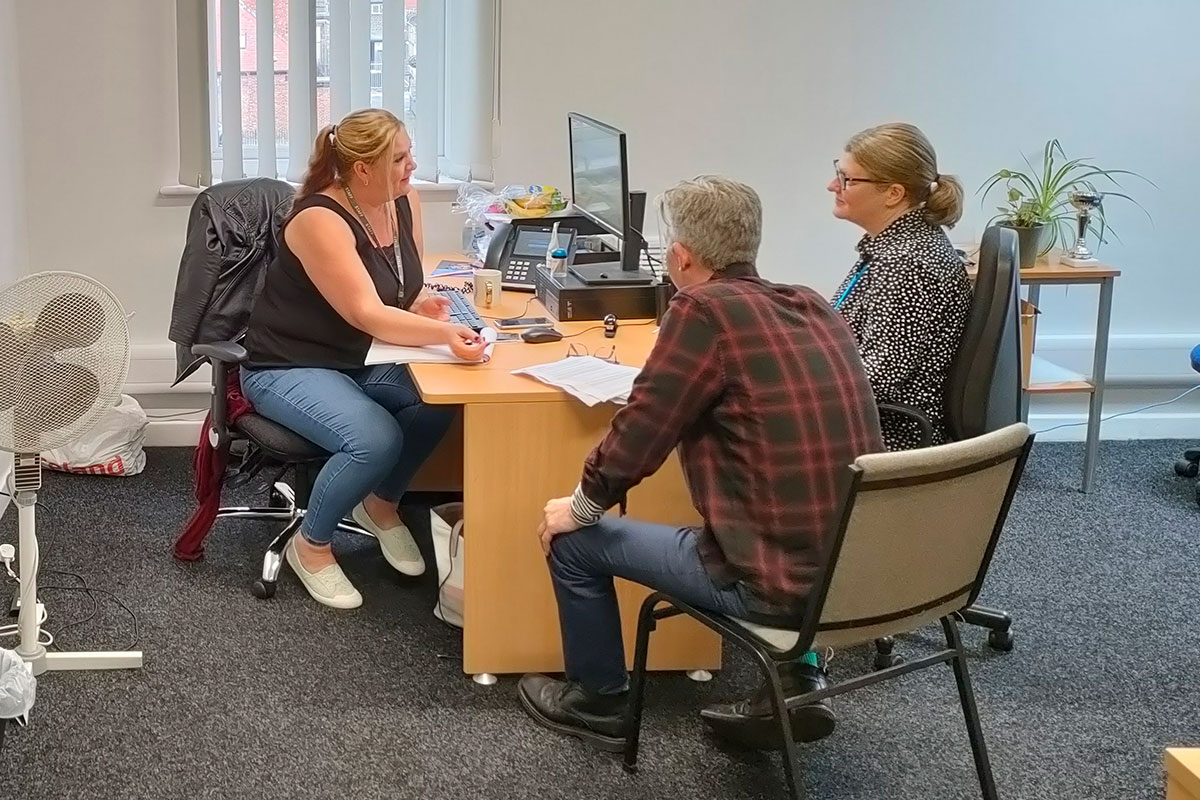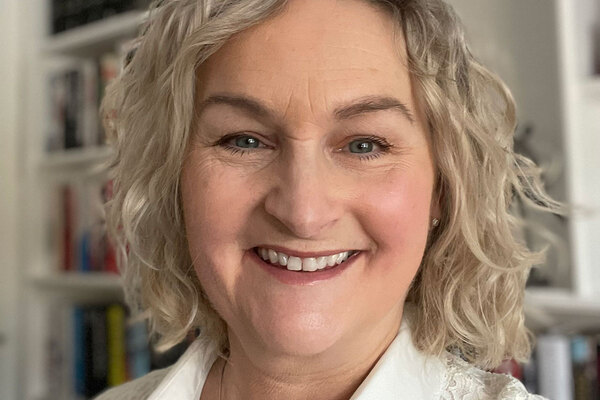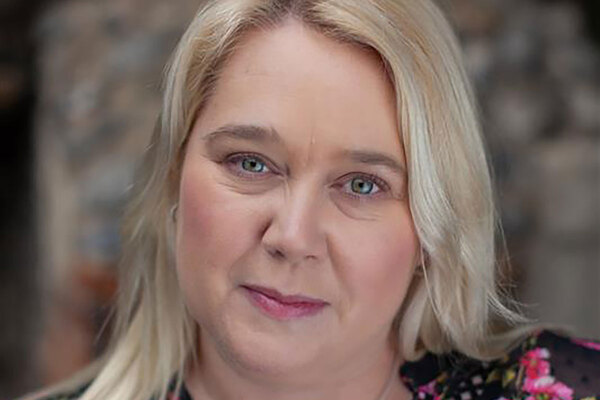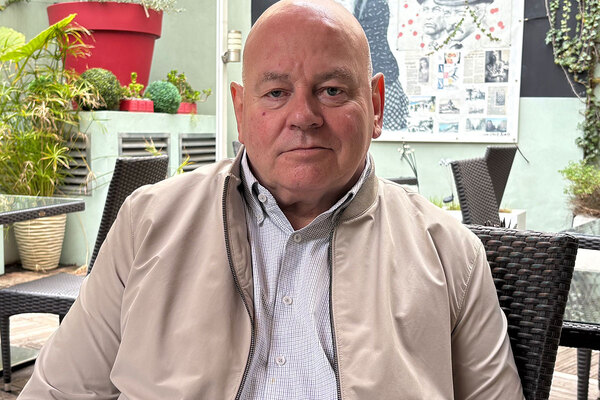A project that bridges the gap between housing and mental health
It is common for people with mental ill health to fall through the gaps when it comes to housing and finding support, but a model exists to tackle this. Simon Brandon visits to find out more. Photography also by Simon Brandon

The artwork that put Crosby Beach on the map is called Another Place. One hundred life-size bronze effigies of the artist Antony Gormley, dotted over two miles of golden sands a short Merseyrail hop from Liverpool, have been staring out towards the horizon since 2005. It is a unique and valuable local fixture – but it is not the only one.
Another thing that makes Crosby unusual is a project that has been helping to secure suitable long-term accommodation and support for people with severe mental illness for the past 20 years. That project is CHART – which stands for Community Housing and Re-enablement Team – run from a small office on the top floor of Crosby Housing Association’s HQ, made up of a team of three people, plus one part-time manager.
Breaking the cycle
The cyclical link between housing and mental health is well-established. A 2017 report by homeless charity Shelter found that one in five people has suffered mental health issues as a result of housing problems – and, according to mental health charity Mind, poor mental health makes it harder to cope with housing problems.
CHART exists to break that cycle. It sits between the NHS, housing and local government, and is hosted and employed by Crosby Housing Association, but the £183,000 annual funding comes from NHS Cheshire and Merseyside.
As Karen Kay, the team’s housing co-ordinator, puts it, CHART bridges the gap between health and housing services, and was brought into being because too many vulnerable people were falling through those gaps. Too many tenancies were breaking down once the tenant’s support was withdrawn. People were living in unsuitable accommodation that exacerbated their mental illness. Others were stuck in hospital simply because there was nowhere else for them to go.
“Without us, there are too many different links,” says Ms Kay. “We ask for it all to come through us. So someone in Sefton who is in touch with secondary mental health services [services that need a referral from a GP, such as hospitals or community mental health teams] and housing issues get referred to us, and everyone involved can contact us. We’re like a central hub.”
Homelessness officer Colm Quinn says CHART can help local service providers that don’t know where else to turn. “We take stress off other agencies,” he says. “People might be ringing the mental health team over problems with housing, and they will refer them through to us.”
The team receives around 300 referrals a year. As well as helping people find and move into suitable accommodation, CHART’s three full-time staff members offer support with everything from form-filling and grants, to claiming benefits and liaising with utility companies.
“We’re contactable down the line and we’re always responsive,” says Ms Kay.
The agencies CHART works with always know who to call, and that their call will be picked up. The team’s small size, meanwhile, allows them to provide ongoing, one-to-one support to their service users for as long as it is needed.

It means fewer failed tenancies and happier communities – and it is crucial to the model’s success, says Mandy Elliott, chief executive of Crosby Housing Association.
“They take referrals from all over,” she says. “Housing associations, the local authority’s housing options team, Mersey Care, they wouldn’t even turn away a call from Joe Public. With it being such a small, personal team, they know people for a long time. Service users might relapse and come back in, and for those people, at a time when they are absolutely desperate, they get a face they have seen before. And how often does that happen when you’re in a health setting?”
Ms Kay and Mr Quinn have been with CHART since the beginning. Twenty years ago, mental health was viewed quite differently. “The public perception at the time of mental illness was danger and violence,” says Ms Kay. Hostile communities were one more issue in the way of the overstretched and under-resourced housing and health teams which, pre-CHART, were tasked with finding accommodation for people with complex needs.”
When CHART launched, Ms Kay recalls, local hospitals were one of the team’s first ports of call. “On the wards, we would see things that from a housing point of view could be quite easily solved,” she says. “It was just that the people in the hospital and all the social care staff, they didn’t know where to go with this issue. They didn’t have those connections.”
CHART: making the difference
The flat that Kelly Murphy, 38, found herself in two years ago was not just unsuitable for a cancer patient with mobility issues – it was taking a serious toll on her mental health, too. A referral to CHART made all the difference.
“I moved in during lockdown, and the pub underneath was having parties until five, six in the morning, and that was affecting my mental health because I wasn’t getting any sleep. I’m a cancer patient and I’d had surgery; I couldn’t walk, and that place was up four flights of stairs.
I had to come up the stairs on my bottom and my partner had to carry my wheelchair up. I couldn’t get out of the flat either, and that was bad for my mental health, too.
“I rang the psychiatrist and he said, ‘Try CHART.’ So I got referred to CHART and that’s how I met Colm [Quinn]. He came over and helped me with all the housing forms, and then I went on Property Pool and got offered a new place.
“Once I’d moved in, that’s when [tenancy support officer] Emma [Hooton] and Karen [Kay] came out. They said they’d be there every step of the way and that I didn’t need to worry. They have been amazing. Emma sat here for two or three hours waiting for furniture to be delivered out of her own time. They got me a couch when I first moved in, and I got a grant for a new washing machine. The support was there.
“They made sure all my benefits were sorted, too. It took a lot of pressure off me. I have been here for two years. CHART’s support meant I didn’t have to stress about things.
“My life has changed since I moved here. I’m so much happier; I’m in the right place. There’s no noise, the neighbours are friendly. It’s like a little community. And I got some more good news recently – after four years of cancer, I’m in remission.
“I had heard of CHART from other people, but I’d never been involved with them myself. The one-on-one support was amazing and they work together well as a team. Without them, I would have been screwed financially. I don’t know where I’d be. I was at rock bottom, but with the help of CHART, I was able to move somewhere where I’m happy and settled. They help you in every way they can.”
Back then, Sefton Council was the main local housing provider – and council staff could be similarly frustrated. ‘‘We had a meeting with the [housing] teams on a Wednesday, and they could get quite aggressive,” says Mr Quinn. “They all had experience of people with mental health problems being accommodated, and then having no one to call on when [the tenancy] broke down. So one of the things we said was that we will stay involved with people, or we’ll reopen the case. And we still do that today.”
Seeing things through
This approach – which Ms Kay describes as “seeing things through to the end” – has helped to grow CHART’s reputation over the years, both with the organisations it works with and its service users (see box, above).
Its links with local healthcare services are particularly strong. CHART’s part-time manager, Neil Doolin, is a full-time manager of NHS Mental Health Services in Sefton. This link is fundamental to the success of CHART’s approach. Mr Quinn describes his team as “honorary NHS”; they have special permission to access service users’ medical records.
“In the past, it would have been phone calls and emails asking for updates, but all of our teams now are able to look at the same records,” explains Mr Doolin. “It makes everything very fluid. There are no barriers now in terms of confidentiality and risk… It makes things much easier.”
Every NHS organisation with mental health inpatients faces the same problem, Mr Doolin says. “There’s always this issue around discharge and accommodation issues,” he adds. “What CHART does is speed up that process in terms of identifying placements, identifying accommodation, meeting with inpatient teams, meeting service users on wards, having face-to-face contact with them, all with the view of understanding what their accommodation needs are, and what’s available.”
He puts much of the success of the CHART model down to Ms Kay and Mr Quinn, and their years of experience and the trusted network of local contacts they have established over that time. “It’s those connections from their own experience that speeds things up,” Mr Doolin says. “For our teams in the community, that’s of huge benefit.”
Its longevity alone suggests that the CHART model works. It gets a thumbs-up from its partners, funders and service users – and it has kept going for 20 years. This poses the obvious question: why hasn’t the CHART approach been repeated across the country?
“It should be replicated, definitely,” says Ms Elliott. “But we’re not at the stage yet where people appreciate the pound note value of it, even if we could show it on paper.”
It has been tried elsewhere. Ms Elliott says trials in two other areas went well. “But nobody would pay for it when it came to the end of the pilot period,” she says. “Because it sits between two stools – three, if you put us in the frame – nobody wanted to take that responsibility for funding.”
CHART’s value to Sefton and its residents has become its best protection against any wavering from those holding its purse strings, she adds. “I play the Dirty Harry role,”’ says Ms Elliott. “When they’re talking about cuts, I just say, ‘Well, get rid of them, then. Are you feeling lucky? The people [they work with] and their situations will be the same, and that resource you had before will be gone. You’ll just get into a further downward spiral.’” ●
Sign up for our care and support newsletter
Already have an account? Click here to manage your newsletters









